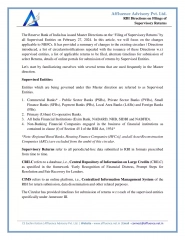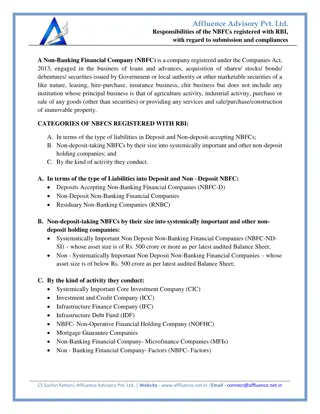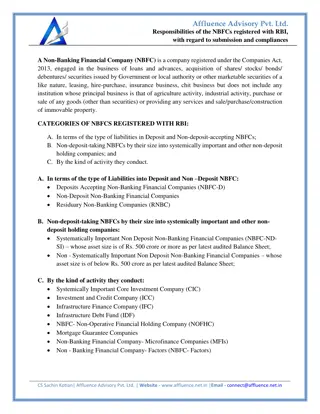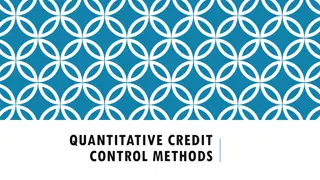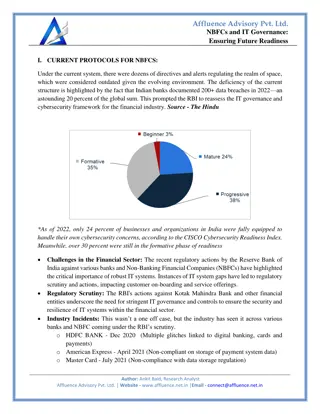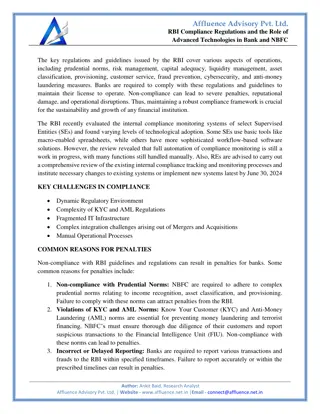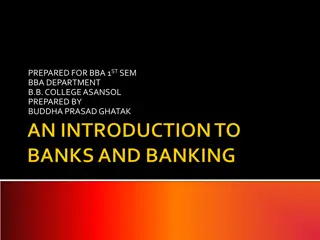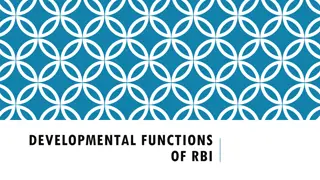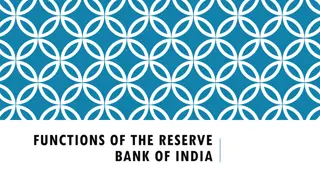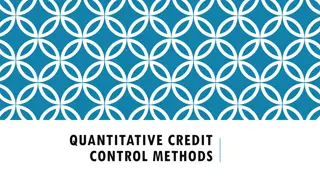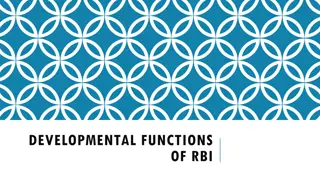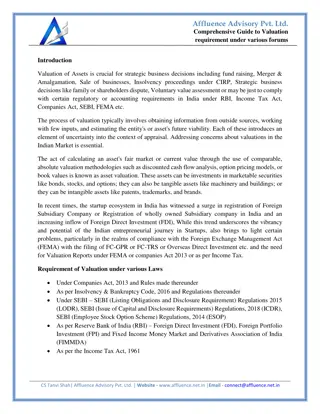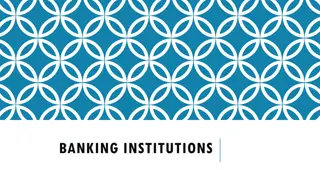
Role and Targets of Reserve Bank of India in Financial Stability
The Reserve Bank of India plays a vital role in ensuring the stability of the financial system through functions such as inflation targeting, exchange rate targeting, and money supply targeting. These objectives aim to regulate financial markets, control inflation, and promote economic stability. Learn how the central bank operates to achieve these crucial goals.
Download Presentation

Please find below an Image/Link to download the presentation.
The content on the website is provided AS IS for your information and personal use only. It may not be sold, licensed, or shared on other websites without obtaining consent from the author. If you encounter any issues during the download, it is possible that the publisher has removed the file from their server.
You are allowed to download the files provided on this website for personal or commercial use, subject to the condition that they are used lawfully. All files are the property of their respective owners.
The content on the website is provided AS IS for your information and personal use only. It may not be sold, licensed, or shared on other websites without obtaining consent from the author.
E N D
Presentation Transcript
INTRODUCTION INTRODUCTION Central bank- apex body of the banking and financial system. Reserve Bank of India was established on 1st April, 1935. Crucial to ensure growth of a nation. Functions are increasing day by day with increase in economy of the country.
OBJECTIVES OBJECTIVES Stablility of monetary and financial system. Regulation of Financial Markets. Regualtion of Inflation. Effective payment system for safe transactions. Regulation of International markets.
CONTROLLER OF CREDIT BALANCED REGIONAL DEVELOPMENT BANK OF ISSUING AUTHORITY TRADITIONAL FUNCTION CUSTODIAN OF FOREIGN EXCHANGE BALANCE OF PAYMENT CONTROL CLEARING HOUSE
INFLATION TARGETING Inflation targeting refers to the policy of the central bank fixing a certain rate of inflation as the target. The central bank estimates the expected rate of inflation, mkes it public as the target rate. If the actual rate of inflation is different from the target rate, then measures are taken to achieve the targeted rate.
The Reserve Bank if India has announced am inflation target of 4% with +/-2% as the tolerance level.
EXCHANGE RATE TARGETING. It refers to a targeted exchange rate against another currency or group of currencies. This policy helps to manage exchange rate fluctuation and protect the economy from a volatile foreign exchange market. The targeted exchange rate also depends on the nature of the economy, developed or developing.
Exchange rate targeting aims at stability in the economy
MONEY SUPPLY TARGETING This targeting is also knows as money growth targeting. Money supply targeting implies fixing a target or limit for money supply in the economy .
Like money supply target, money growth target indicates the target for the growth of money supply.

